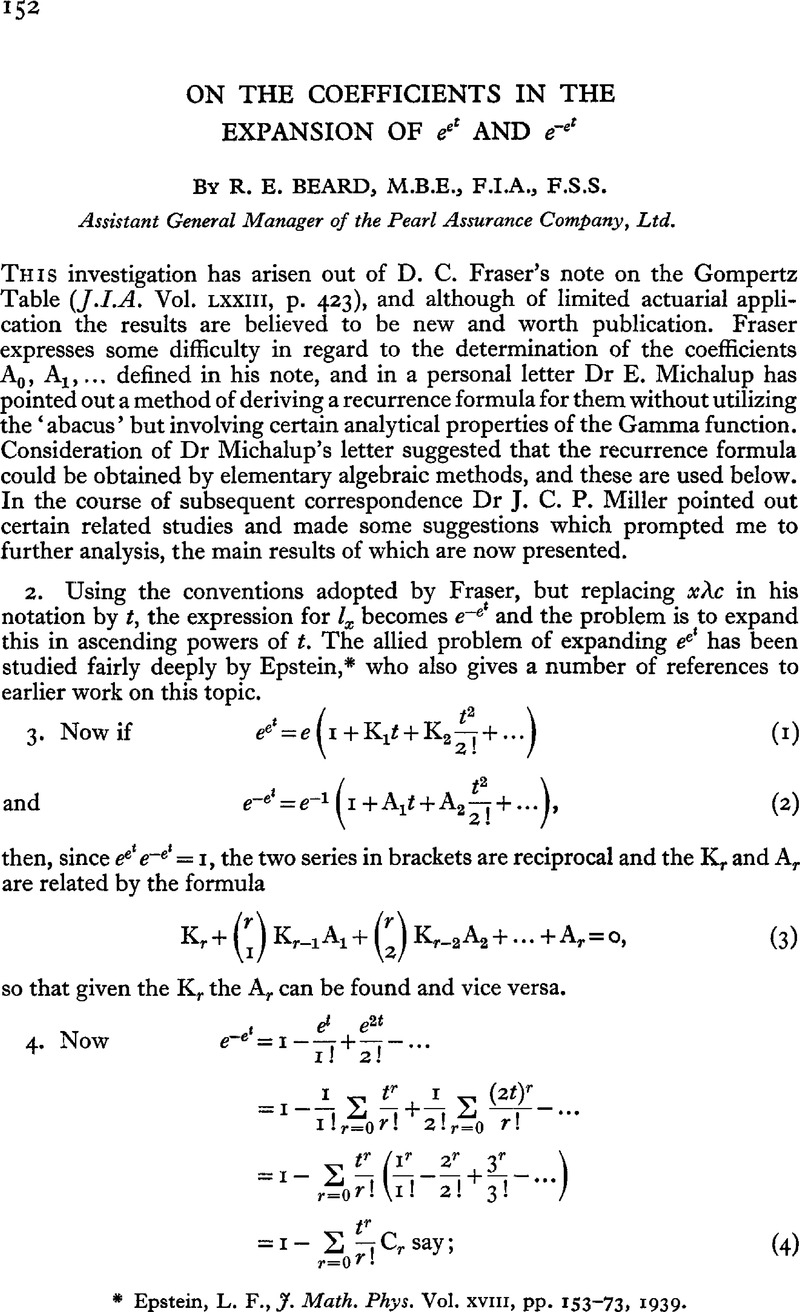Article contents
On the coefficients in the expansion of eet and e−et
Published online by Cambridge University Press: 18 August 2016
Abstract

- Type
- Other
- Information
- Copyright
- Copyright © Institute and Faculty of Actuaries 1950
References
page 152 note * Epstein, L. F., J. Math. Phys. Vol. xviii pp. 153–73, 1939.CrossRefGoogle Scholar
page 154 note * Epstein, L. F., J. Math. Phys. Vol. xviii, pp. 153–73, 1939.CrossRefGoogle Scholar
page 155 note * Epstein, L. F., J. Math. Phys. Vol. xviii pp. 153–73, 1939 CrossRefGoogle Scholar
page 156 note * Formula (16) was found, in the first place, for the special function under discussion, but its elegance and the fact that it was capable of easy generalization suggested that it could not have escaped the attention of mathematicians. In fact, it was found to be a special case of a formula known as Poisson's Summation Formula. Hardy (Divergent Series, p. 330, Oxford University Press, 1949) indicates that Poisson arrived at it in his investigation of the Euler-Maclaurin formula and gives the finite form
An alternative form with various proofs and special cases together with various referencesi s given by Titchmarsh ( Introduction to Theory of Fourier Integrals, p. 60, 1937) as follows:
where ![]()
It was thought that the proof given here would be of interest to actuaries.
- 3
- Cited by


